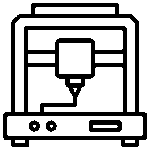SMPS Component Placement Tips – Build Efficient Power Supplies

A poorly laid out SMPS (Switched-Mode Power Supply) can lead to noise, heating, or even failure. Whether you’re a hobbyist or prototyping for production, smart component placement is key to a stable design.
⚠️ The Problem: Noisy or Unstable SMPS
Many beginners make the mistake of randomly placing components on the PCB. In an SMPS, this causes:
High EMI (Electromagnetic Interference)
Voltage spikes
Overheating of critical parts
🔧 The Solution: Prioritize Current Path and Heat Management
Here are some beginner-friendly tips:
Place the input capacitor close to the switching IC or MOSFET.
Keep high-current loops (like input → switch → diode → ground) as small and tight as possible.
Put snubber circuits near the switching node.
Use thick copper traces or polygon fills for high-current paths.
💡 Practical Example: Designing a 12V to 5V Buck Converter
You’re building a buck converter for an IoT device. If you place the inductor far from the diode or switching MOSFET, you’ll face voltage spikes and losses.
✅ Fix: Place the inductor, diode, and output cap in a compact triangle right after the switch.
🧮 Sample Calculation: Copper Trace Width
For 2A current and 35µm copper:
Width ≈ 1.5mm for <10°C rise (IPC-2221 standard).
Use wider traces or pour if space allows.
🛠️ Product Suggestion (Made in India)
Make your SMPS project robust with these essentials:
🔩 MOSFET Modules – Perfect for switching circuits
👉 Shop MOSFET Modules🧪 Flux Paste – For precise, long-lasting solder joints
🛍️ Shop now at SmartXProKits.in
🇮🇳 Support our work and India’s innovation—buy from our Make in India site!



















